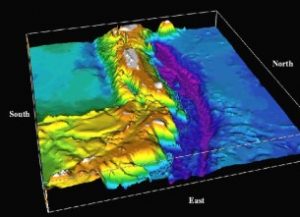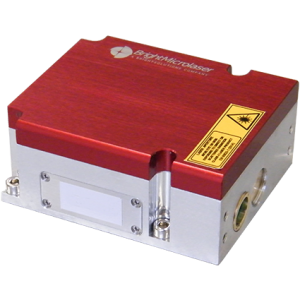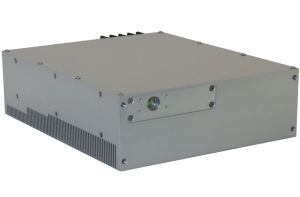Bathymetry Lasers
Laser bathymetry takes advantage of the absorption properties of water to map the depths of large bodies of water including lakes and oceans from a passing airplane. This is achieved by shooting two different pulsed lasers whose pulses are synchronized, to the water below and using time-of-flight (TOF) laser radar to determine the total round-trip distance. In this case, one laser is chosen in the near-infrared, where water is highly absorbent, and the other is in the visible spectrum where water is highly transparent. The difference in TOF between the two bathymetry lasers will provide the depth of the body of water. Traditionally, 1064 nm and 532 nm are the two wavelengths used for this application, but it is important to note that most combinations of near-infrared and visible lasers will work. On this page, you will find a list of all of the bathymetry lasers we offer.
advantage of the absorption properties of water to map the depths of large bodies of water including lakes and oceans from a passing airplane. This is achieved by shooting two different pulsed lasers whose pulses are synchronized, to the water below and using time-of-flight (TOF) laser radar to determine the total round-trip distance. In this case, one laser is chosen in the near-infrared, where water is highly absorbent, and the other is in the visible spectrum where water is highly transparent. The difference in TOF between the two bathymetry lasers will provide the depth of the body of water. Traditionally, 1064 nm and 532 nm are the two wavelengths used for this application, but it is important to note that most combinations of near-infrared and visible lasers will work. On this page, you will find a list of all of the bathymetry lasers we offer.
RPMC has years of experience supporting Bathymetry applications, helping industry professionals select the right tool for the job.
Contact Us today to let one of our knowledgeable Product Managers assist you!
| Picture | Part Number | Type | Wavelength (nm) | Output power (W) | Pulse energy (uJ) | Pulse width | Rep rate |
|---|---|---|---|---|---|---|---|

|
SB1-473 | Pulsed DPSS Lasers, Microchip Lasers | 473 | 0.0009, 0.010, 0.015 | 1.0, 3.0, 9.0 | 2ns | 100Hz, 5kHz, 10kHz |

|
SB1-532 | Pulsed DPSS Lasers, Microchip Lasers | 532 | 0.004, 0.006, 0.010, 0.017, 0.020, 0.030, 0.040, 0.075, 0.100 | 0.300, 7.0, 10.0, 15.0, 20.0, 30.0, 40.0 | 400ps, 1.3ns | 10Hz, 100Hz, 200Hz, 1kHz, 5kHz, 10kHz, 15kHz, 55kHz, 100kHz |

|
SB1-946 | Pulsed DPSS Lasers, Microchip Lasers | 946 | 0.004, 0.060, 0.070, 0.105 | 7.0 | 2ns | 100Hz, 5kHz, 10kHz |

|
Wedge-HB/XB 532 | Pulsed DPSS Lasers | 532 | 2.0 | 1000.0, 2000.0 | 1.5ns | Single shot to 1kHz, Single shot to 2kHz |

